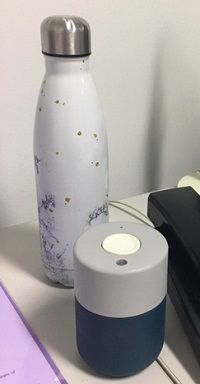Over the past few weeks, Readings staff have been road testing different projects, recipes and tips from Lauren and Oberon Carter’s new DIY guide to reducing personal waste, A Family Guide to Waste-Free Living.
Here are our staff’s takeaways from their new projects…
Ellen Cregan tried minimising her plastic food storage.
I am forever hoarding glass jars in my kitchen and using them for all sorts of things – storing dry pantry staples, keeping half-chopped vegetables in the fridge, and even sometimes for carting leftovers around. I’m trying to gradually phase out my plastic kitchen storage containers as they age and break, but I still use them for keeping food in the freezer.
A Family Guide to Waste-Free Living has a section on how to freeze food in glass jars, which is something I thought wasn’t possible – whenever I’ve tried it, I’ve always ended up with shattered glass. This isn’t the most exciting thing I could have taken from this book, but I think it’s one of the most practical bits of kitchen advice I’ve had in a while!
Chris Gordon tried making seed bombs.
There is so much to be cross about presently. Things are slipping; our collective hearts are turning cold. It’s time to act and _A Family Guide to Waste-Free Living_has inspired me to take certain steps.
It’s time to start my own war, the gardening way. Reading Lauren and Oberon’s recipe on page 232 of the book, I was inspired to muster up a defiant attitude and create some balls of mischief: sweet little seed bombs.
All I needed to do was purchase flower seeds, and gather old newspapers and a little time. Once dark, I donned a balaclava (optional) and I walked casually along the street, throwing those balls into the cracks of streets, on to traffic islands and into abandoned yards. It was fantastic.This time of the year is the perfect time to rein your neighbourhood with seeds. Believe me, random flowers help everyone. I’m taking this task on forevermore.
Lian Hingee tried repurposing fabric scraps.
I love to sew, and on weekends you will often find me sitting behind my sewing machine merrily making alterations to second-hand clothes or whipping up something new from fabric. It’s a fun hobby, and one I could feel very virtuous about except for the embarrassing surplus of leftover fabric scraps that are rapidly building up in my sewing stash. They’re too small to make anything big like clothing, but I was inspired by A Family Guide to Waste-Free Living to try my hand at making knickers with the knit fabrics, and hankies with the wovens. They’re easy, quick, cheaper (and more environmentally friendly than store-bought options), and the hankies in particular make quite cute gifts when packaged up in bundles of three and tied with twine.
I also received a huge bag of home-grown summer plums from a friend a month or so ago, and was absolutely thrilled to see a recipe for preserved spicy-sweet plums in the book – I’ve got the recipe saved and the plums frozen waiting for me to stockpile enough large jars to get bottling.
Angela Crocombe tried minimising her plastic waste.
I am passionate about minimising my weekly waste that goes to landfill. It’s not so hard to compost and recycle your bottles and hard plastics, but many people are confused about what to do with soft plastics (plastic bags, packaging around biscuits and snacks, and so on). Unfortunately, they take up almost half of our garbage. Basically, it’s a soft plastic if you can squish it in your hand. You cannot put them in your recycling bin, but did you know that you can recycle them at many Coles or Woolworths supermarkets? The supermarkets melt them down and recycle them into outdoor furniture and other uses. So if you can separate them from other rubbish and drop them into the plastic recycling bin next time you go to the supermarket, you will drastically reduce your rubbish going to landfill. Also, instead of using a plastic bag to line your garbage bin, I have reduced it down to a much smaller container (which is all I need now I’m getting rid of those soft plastics) and line it in newspaper. When it’s ready to go out I just roll up the newspaper nice and tight and throw it in the outdoor bin.

Sharon Clements tried switching to reusable beverage containers.
After reading the book, I’ve resolved to get my act together with regards to something I do every day: drinking water and coffee. (Working with several responsible coffee drinkers may have also helped in this!) Using a water bottle and a reusable coffee cup is a simple change, but it’s one that I employ every day now – and it’s the kind of achievable, step-by-step change that reading A Family Guide to Waste-Free Living inspires.


